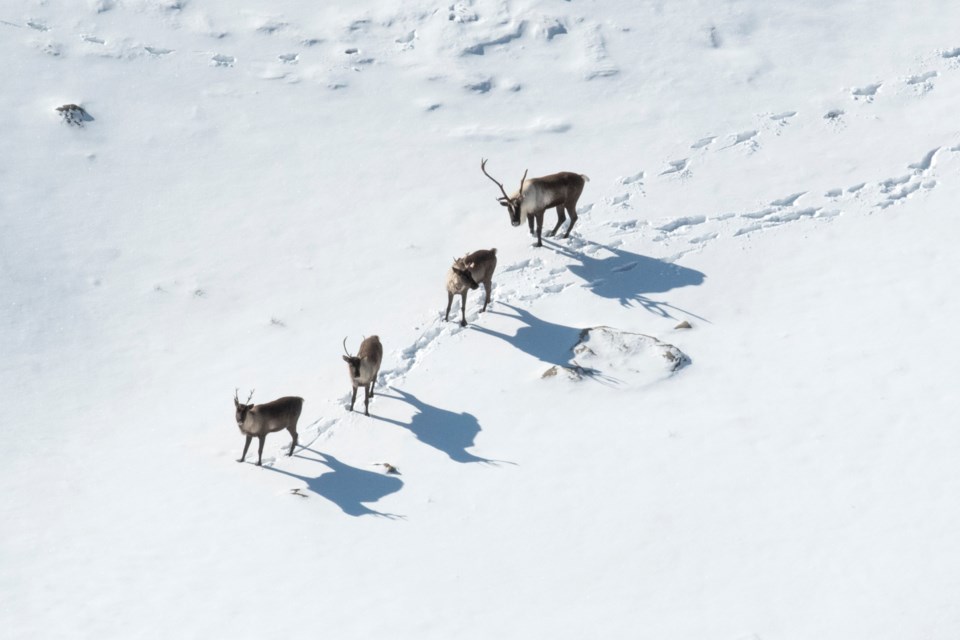Scott Hayes, Local Journalism Initiative Reporter | [email protected]
The animals are counting on us humans, because weÔÇÖre counting fewer and fewer animal species in the world.
ThatÔÇÖs the message from environmental and conservation groups who will be watching and participating in the 2022 Montreal Biodiversity Conference. It is commonly called COP15, which stands for the 15th meeting of the Conference of the Parties to the UN Convention on Biological Diversity.
When the two-week summit of representatives from nearly 200 countries starts on Dec. 7, Tara Russell will be there.
ÔÇťIt is this vitally important event,ÔÇŁ said the program director with the Canadian Parks and Wilderness Society (CPAWS) of Northern Alberta.
Those participating countries will be developing future goals for halting and reversing biodiversity loss. 
ÔÇťCOP15, the nature of COP, is that focus on what are we going to do to conserve nature? How are we going to halt biodiversity loss? How are we going to protect and restore the habitat that we need around the world to do that?ÔÇŁ Russell ▓╣▓§░ý▒╗ň.╠ř
ÔÇťI think Canada, being a location for COP15, provides a really good opportunity for folks across the country to highlight our leadership on that.ÔÇŁ
These issues are all close to AlbertansÔÇÖ hearts, she said, pointing out data from showing how the majority of Albertans think that more land needs to be protected in the province.┬á
ÔÇťMost Albertans support setting aside more land in Alberta to protect wildlife habitat to prevent further decline of wildlife populations (77%), more land in Alberta to be left as wilderness where human activities are minimal (76%), and more land for provincial parks with a focus on recreation and leisure (73%),ÔÇŁ the poll reads.
ÔÇťThe provinceÔÇÖs direction is certainly contrary to what our recent polls suggest that Albertans actually want,ÔÇŁ Russell said.
The Government of Alberta announced that it would be restructuring the Environment and Parks ministries into the Ministry of Environment and Protected Areas and a separate Ministry of Forestry, Parks, and Tourism.
Russell said that this seems to focus more on development and high-impact recreation within AlbertaÔÇÖs parks.
ÔÇťIt is really, I guess, illuminating in what Albertans really want, which is more parks and protected areas, more space for wilderness,ÔÇŁ Russell said.
ÔÇťThe poll really highlighted people's concerns about biodiversity loss and the loss of wildlife,ÔÇŁ she added, calling out a highlight that shows 95 per cent of Albertans polled were concerned about loss of species and the global biodiversity crisis.ÔÇŁ
The poll shows a strong indication that Albertans expect more action to protect nature. 
Since 60 per cent of the provinceÔÇÖs land area is public land, it is owned and managed by the provincial government. That means that important decisions on managing the majority of AlbertaÔÇÖs land will be led by these new ministries.┬á
ÔÇťFederally, our government has committed to protecting 30 per cent of land for conservation purposes by 2030. Alberta has no matching commitments. The province hasn't made any commitments to increasing protection, and that is, again, at odds with what our poll results are saying,ÔÇŁ Russell added.
Those poll results show 85 per cent of the respondents support the province committing to meeting that 30 percent protection by 2030.
The Alberta Wilderness Association (AWA) also expressed its concerns about loss of protected land as it relates to loss of biodiversity, which they say is vital to healthy ecosystems and essential ecosystem services.
ÔÇťDespite early support for the 2010 Aichi Biodiversity Targets, a previous attempt to address biodiversity loss, these targets ultimately failed to achieve the desired result,ÔÇŁ the statement read.
ÔÇťAlberta and Canada need to take this opportunity to prevent further biodiversity loss,ÔÇŁ said Ruiping Luo, conservation specialist with the AWA, with that ÔÇťopportunityÔÇŁ being COP15.
Russell said that the outcomes will come down to commitments for funding. The past sustainable development goals were not all realized or achieved, she continued, but there was still progress made.
ÔÇťWe saw in 2018 the federal government make the largest budget commitment for nature conservation ever. That funding has continued although we are going to need more. I think that that's made some real important developments in advancing conservation across the country,ÔÇŁ she said.
ÔÇťI also don't think we really have a choice. We can't fail at this. I think getting the countries from around the world together to talk and discuss it is essential.ÔÇŁ
Luo shared on biodiversity loss from the World Wildlife Foundation that show a 94 per cent decline in all species in Latin America since 1970, and a 69 per cent decline across the globe.
ÔÇťIf biodiversity intactness falls below 90 per cent, it can affect ecosystem functioning. Canada is stated to be at 89 per cent,ÔÇŁ she said.
The AWAÔÇÖs statement said Alberta should commit to a target of 25 per cent of land protected by 2025, ÔÇťparticularly in grassland, parkland and foothills ecosystems where protection is currently lacking.ÔÇŁ
The organization also wants to see a reduction in both the conversion and fragmentation of native prairie and forest habitat.
Additionally, the province could protect biodiversity by completing effective regional and sub-regional land-use planning with cumulative effects assessments and science-based limits on development.
It could also expand conservation measures to protect species-at-risk and reintroduce a measure for ÔÇťprotected and conserved areasÔÇŁ back into the Government of Alberta Business Plan Standards.┬á
ÔÇťUrgent action is vital to finally halting and reversing biodiversity loss,ÔÇŁ the statement read.




